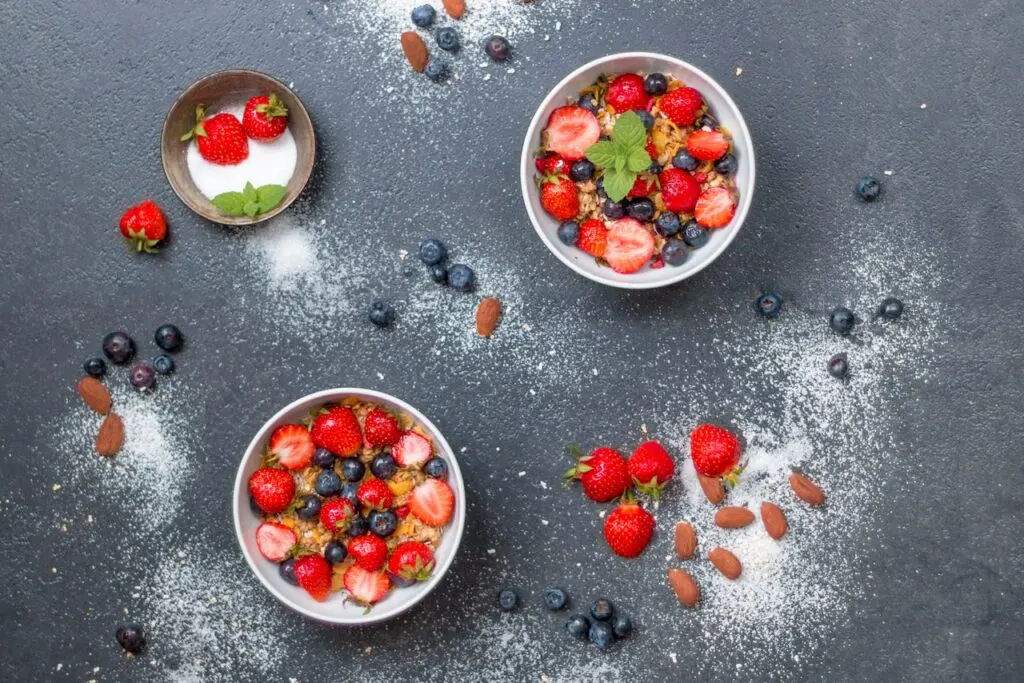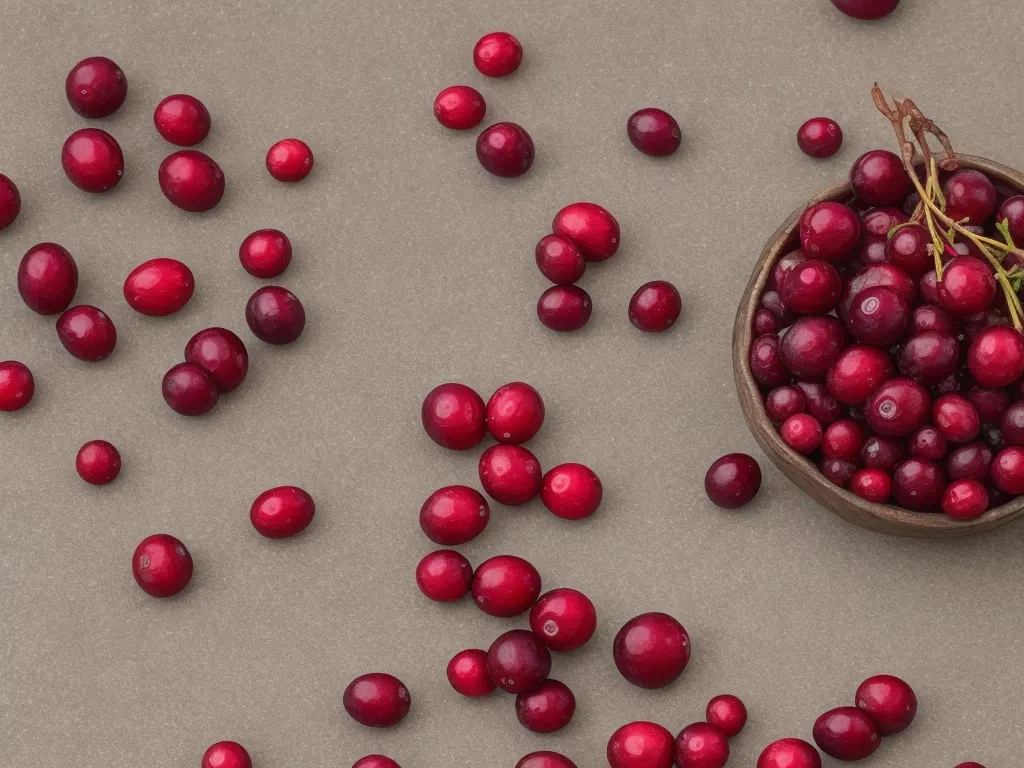Iron is an essential mineral that is required by the body for various physiological processes, including the production of hemoglobin, which is a protein in red blood cells that carries oxygen to body tissues. Iron is also necessary for energy production and the normal functioning of cells.
Iron is not a vitamin, but rather a mineral. Vitamins are organic compounds that are required in small amounts for normal bodily functions, while minerals are inorganic elements that are also essential for the body’s proper functioning. Iron is classified as a trace mineral, as the body requires it in relatively small amounts compared to other minerals like calcium or magnesium.
Iron is obtained through the diet from food sources such as red meat, poultry, fish, beans, lentils, tofu, fortified cereals, and dark green leafy vegetables. The absorption of iron from food can be influenced by various factors, such as the type of iron (heme or non-heme) and other dietary components like vitamin C, which can enhance iron absorption.
Iron deficiency is a common nutritional deficiency worldwide, and it can lead to anemia, which is characterized by a decrease in the number of red blood cells or a decrease in the amount of hemoglobin in the blood. Iron supplements, in the form of ferrous salts or other iron compounds, may be recommended by healthcare providers to address iron deficiency or anemia. However, it’s important to consult a healthcare professional before taking iron supplements, as excessive iron intake can also have adverse effects.
In summary, while iron is not a vitamin, it is an essential mineral that plays a critical role in various physiological processes in the body, and obtaining sufficient iron through a balanced diet is important for overall health. If you suspect an iron deficiency or anemia, it’s best to consult a healthcare professional for appropriate diagnosis and treatment.
Iron Uses:
Iron is a versatile element that has numerous uses in various industries and applications. Some common uses of iron include:
Construction: Iron is widely used in construction for structural components such as beams, columns, and reinforcement bars (rebar) in concrete. It provides strength and durability to buildings and infrastructure.
Transportation: Iron is used in the manufacturing of automobiles, trucks, trains, and ships. It is used for engine blocks, gears, axles, and other components due to its strength, toughness, and machinability.
Energy production: Iron is used in the construction of power plants, including nuclear power plants, as well as in the production of renewable energy technologies such as wind turbines and solar panels.
Manufacturing: Iron and its alloys are used in a wide range of manufacturing processes, including metal fabrication, casting, forging, and machining. Iron is also used in the production of a wide range of consumer goods, such as appliances, tools, and machinery.
Packaging: Iron is used in the production of steel cans, containers, and drums for packaging of various products, including food, beverages, chemicals, and industrial materials.
Infrastructure: Iron is used in the construction of bridges, railways, pipelines, and other infrastructure projects due to its strength, durability, and corrosion resistance.
Agriculture: Iron is used in agricultural equipment, such as tractors, plows, and harvesting machinery, as well as in irrigation systems and fencing materials.
Medical and healthcare: Iron is an essential element for the human body, and it is used in the production of medical equipment, such as MRI machines, surgical instruments, and implants.
Household items: Iron and steel are used in the production of a wide range of household items, including appliances, cutlery, furniture, and fixtures.
Art and aesthetics: Iron is used in artistic and aesthetic applications, such as sculptures, decorative items, and architectural elements, due to its malleability and versatility in shaping and forming.
These are just some of the many diverse uses of iron in various industries and applications. Iron and its alloys play a crucial role in modern society, providing strength, durability, and versatility in a wide range of applications.
Iron Precautions:
Iron is an essential mineral that plays a crucial role in various physiological processes in the body. However, taking iron supplements or medications containing iron requires certain precautions to ensure safe and effective use. Here are some precautions to keep in mind when using iron supplements or medications:
Consult with a healthcare professional: Before starting any iron supplementation, it’s important to consult with a healthcare professional, such as a physician or a registered dietitian, to determine if you actually need iron supplementation, and if so, what dosage is appropriate for you.
Follow dosing instructions: Always follow the dosing instructions provided by your healthcare provider or the manufacturer of the iron supplement. Do not exceed the recommended dosage unless instructed by a healthcare professional.
Take with food or as directed: Iron supplements are typically recommended to be taken with food to enhance absorption and reduce the risk of gastrointestinal side effects. However, some iron supplements may need to be taken on an empty stomach for optimal absorption. Follow the instructions provided by your healthcare provider or the manufacturer of the iron supplement.
Avoid taking with calcium-rich foods or supplements: Calcium can interfere with iron absorption. Therefore, it’s best to avoid taking iron supplements with calcium-rich foods or calcium supplements, unless otherwise instructed by your healthcare provider.
Be aware of potential interactions: Iron supplements can interact with certain medications, including antacids, proton pump inhibitors, and tetracycline antibiotics, reducing their absorption and effectiveness. If you are taking any medications, inform your healthcare provider or pharmacist to avoid potential interactions.
Keep out of reach of children: Iron supplements, particularly those in high doses, can be toxic to children if accidentally ingested. Keep iron supplements out of reach of children and in child-resistant packaging.
Monitor for side effects: Be vigilant for any potential side effects of iron supplementation, such as constipation, nausea, vomiting, stomach cramps, diarrhea, heartburn, or allergic reactions. If you experience any concerning symptoms, contact your healthcare provider promptly.
Get regular check-ups: If you are taking iron supplements on a long-term basis, it’s important to get regular check-ups and blood tests to monitor your iron levels and ensure that you are not developing iron overload.
Store properly: Store iron supplements in a cool, dry place, away from direct sunlight, and follow the storage instructions provided by the manufacturer.
Do not self-diagnose or self-treat: Iron supplementation should always be done under the guidance of a healthcare professional. Do not self-diagnose or self-treat with iron supplements without proper medical advice.
It’s crucial to follow these precautions to ensure safe and effective use of iron supplements or medications containing iron. If you have any questions or concerns about iron supplementation, consult with your healthcare provider for personalized advice.
Iron Dosing:
The dosing of iron supplements or medications containing iron should be determined by a healthcare professional based on individual needs and specific health conditions. The recommended dosage of iron can vary depending on factors such as age, gender, overall health, and the reason for supplementation. Here are some general guidelines for iron dosing:
Recommended Dietary Allowance (RDA) for iron: The RDA for iron varies by age and gender. As per the National Institutes of Health (NIH), the recommended dietary allowances for iron are as follows:
Infants (0-6 months): 0.27 mg/day
Infants (7-12 months): 11 mg/day
Children (1-3 years): 7 mg/day
Children (4-8 years): 10 mg/day
Children (9-13 years): 8 mg/day
Males (14-18 years): 11 mg/day
Females (14-18 years): 15 mg/day
Males (19-50 years): 8 mg/day
Females (19-50 years): 18 mg/day (during pregnancy: 27 mg/day)
Males (51+ years): 8 mg/day
Females (51+ years): 8 mg/day
Iron supplementation for deficiency: If you have been diagnosed with iron deficiency anemia or have a confirmed iron deficiency as determined by a healthcare professional through blood tests, the recommended dosage of iron supplements may vary depending on the severity of the deficiency. Typically, the starting dose for oral iron supplements is 150-200 mg of elemental iron per day, divided into two to three doses, and taken with food to enhance absorption. However, the exact dosage and duration of supplementation should be determined by your healthcare provider.
Individualized dosing: Iron dosing may vary for specific health conditions or situations, such as pregnancy, breastfeeding, chronic diseases, or special populations, and should be determined by a healthcare professional based on individual needs.
It’s important to note that iron supplements should only be taken as prescribed or recommended by a healthcare professional. Taking excessive amounts of iron can lead to iron overload, which can be harmful. Iron supplements should not be used for self-diagnosis or self-treatment without proper medical advice. Always consult with your healthcare provider for personalized dosing recommendations and guidance.
FAQs:
What food is highest in iron?
Iron-rich foods red meats (beef, lamb, veal, pork, kangaroo). The redder the meat, the higher it is in iron. offal (liver, kidney, pate) poultry. fish or shellfish (salmon, sardines, tuna) eggs.
What vitamin is iron?
Your body needs sufficient iron each day to help form proteins in your blood and muscles. According to the Office of Dietary Supplements, almost two-thirds of the iron in your body is used to make oxygen-carrying proteins found in your blood. But iron isn’t a vitamin, it’s a nutrient classified as a mineral.
What causes low iron?
Common causes of iron deficiency include not getting enough iron in your diet, chronic blood loss, pregnancy and vigorous exercise. Some people become iron deficient if they are unable to absorb iron. Iron deficiency can be treated by adding iron-rich foods to the diet.
How can I increase iron in my body?
Choose iron-rich foods Red meat, pork and poultry. Seafood. Beans. Dark green leafy vegetables, such as spinach. Dried fruit, such as raisins and apricots. Iron-fortified cereals, breads and pastas. Peas.
What is iron in food?
Iron is a mineral that is naturally present in many foods, added to some food products, and available as a dietary supplement. Iron is an essential component of hemoglobin, an erythrocyte (red blood cell) protein that transfers oxygen from the lungs to the tissues.
Which fruit is iron rich?
Dried fruits like prunes, raisins and apricots are good sources of iron. 100 grams of prunes contain 0.93 mg of iron while raisins contain 2.6 mg of iron. Apricots have 6.3 mg of iron per 100 grams. Prunes also help in digestion and lower cholesterol levels in our body.
Are eggs high in iron?
Low iron levels are a common concern for blood donors, so you might be wondering if eggs are a good source of iron to help you out. Fortunately, eggs are a great source of iron, protein and other essential vitamins.
Is banana rich in iron?
Our results show that iron absorption from raw bananas is high probably due to this significant increase of soluble carbohydrates that increase iron solubility. Approximately 50% of the iron that was consumed in the raw bananas was absorbed. Thus, even though raw bananas have a low iron content, absorption is high.
What drinks are high in iron?
Iron-rich drinks include apple juice, apricot nectar, beef broth, beet juice, cocoa using natural cocoa powder, “green” smoothies, orange juice, pea protein smoothies, prune juice, tomato juice, and spinach juice.
What is the benefit of iron?
Iron is a mineral that the body needs for growth and development. Your body uses iron to make hemoglobin, a protein in red blood cells that carries oxygen from the lungs to all parts of the body, and myoglobin, a protein that provides oxygen to muscles.
What is normal iron level?
Normal value range is: Iron: 60 to 170 micrograms per deciliter (mcg/dL), or 10.74 to 30.43 micromoles per liter (micromol/L) Total iron binding capacity (TIBC): 240 to 450 mcg/dL, or 42.96 to 80.55 micromol/L.
What are the 3 stages of iron deficiency?
This occurs in three stages: First stage: Iron stores are depleted. … Second stage: When iron stores are low, the normal process of making red blood cells is altered. … Third stage: Iron-deficiency anemia develops because there isn’t enough iron to make hemoglobin for red blood cells.
What are symptoms of low in iron?
Iron deficiency anaemia tiredness and lack of energy. shortness of breath. noticeable heartbeats (heart palpitations) pale skin.



